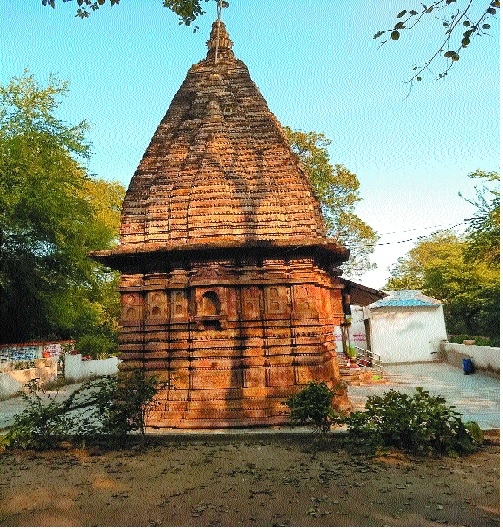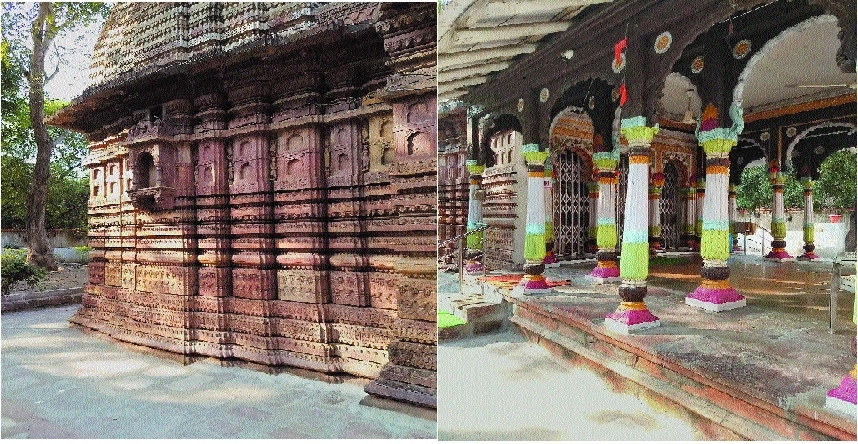Murlidhar Mandir Sonegaon follows principles of ancient architecture
21 Nov 2020 10:52:06

By Rajendra Diwe
Murlidhar Mandir situated on the bank of Sonegaon Lake in South-West direction of Nagpur city is one of the ancient temples built in the 19th century. The ancient temple architecture recommends that site of a temple should be at sangams (confluence of rivers), river banks, lakes and seashore, the Brihat Samhita and Puranas suggest that temples may also be built where a natural source of water is not present. Here too, they recommend that a pond be built preferably in front or to the left of the temple with water gardens. If water is neither present naturally nor by design, water is symbolically present at the consecration of temple or the deity.

Indologist and promoter of Warsa Darshan, Dr Sheshshayan Deshmukh told some salient features of this temple. He said, “The ‘prakara’ of the temple is big. The entrance of Prakara is very simple and the ‘adhisthan’ also belongs to Kamadpeeth class.” The temple is built using red and yellow stone and it is also termed as ‘Saptaprasad’ as it fulfills all principles of architecture. The temple is well maintained and is facing towards East direction, he added. Dr Deshmukh mentioned, “The temple has Makara Pranala which is similar to the European gargoyle. It depicts the mythical sea-creature Makara (also called graha). The popularity of the Makara-pranala probably results from the creature’s association with water. Aparajita-prchchha, dated late 12th to early 13th century, refers to the Makara-pranala used to clear the water out of the temple’s jagati (platform).”
“The temple consists of Garbhagruha, Antaral and Sabhamandap (gathering hall). The sabhamandap is based on wooden pillars while the ‘Antaral’ is rectangular in shape. There are two Devkoshtha on right and left sides of Antaral outside the entrance of Garbhagruha. The Garbhagruha has three ventilation windows. The Bhadrapeeth in Garbhagruha is one metre high and has carvings. The beautiful and decorated idol is placed on Bhadrapeeth with carvings at its back side,” he added.
There is a small temple of Garuda on the west side of Garbhagruha. The Antaral of temple has four double pillars (total eight) and three arcs. The Sabhamandap has 24 wooden pillars out of them 10 pillars are situated in the place of Rangasheela while 14 are placed outside. All the pillars are carved with beautiful designs and placed on stones, Dr Deshmukh said.